1. Man vs Second Life
(Thanks to Doubledown Tandino for the heads-up on this one)
2. ICS Ballet’sMist (Mitikas Stage) in Second Life
3. Rev Mark’s Farewell from Anglican Cathedral of Second Life
Tech -- Culture -- Humour
1. Man vs Second Life
(Thanks to Doubledown Tandino for the heads-up on this one)
2. ICS Ballet’sMist (Mitikas Stage) in Second Life
3. Rev Mark’s Farewell from Anglican Cathedral of Second Life
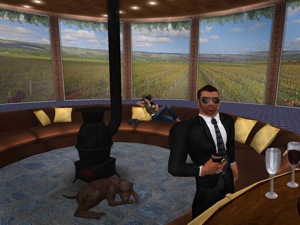 Back in May 2007 we covered the launch of a sim in Second Life called Australia. Up until a month or so ago, things hadn’t altered much until the sim’s change of ownership when it’s previous owner sold due to real-world time contraints. Now run by Australian Second Life developers Top Dingo, there’s been a significant remodification.
Back in May 2007 we covered the launch of a sim in Second Life called Australia. Up until a month or so ago, things hadn’t altered much until the sim’s change of ownership when it’s previous owner sold due to real-world time contraints. Now run by Australian Second Life developers Top Dingo, there’s been a significant remodification.
Top Dingo partners Noel Jacobson (SL: Pants Lilliehook) and Amanda Hassett (Mahala Peccable) spent just under a month creating some impressive experiences, from red-dirt outback to a South Australian winery and Opera House. Some are indeed enhancements of builds already in existence but the overall effort is so much more than that. It all just seems to fit together a lot more effectively and there’s some real visual delights spread throughout. A highlight for me was the Centrepoint Sydney Tower with its 36-degree Sydney panorama.
Aesthetics have always been a matter of individual taste, but for me, the work done by the Top Dingo team has placed the Australia sim in the same league as the BigPond and ABC presences as far as their visual appeal and focus on building a community rather than a ‘brochure sim’.
A few pictures from the Australia sim:
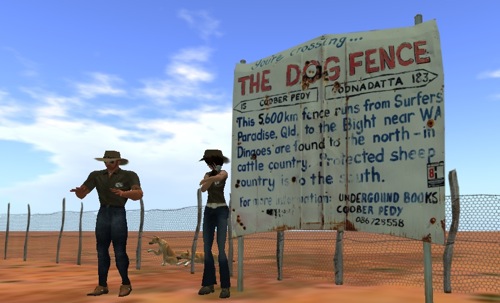
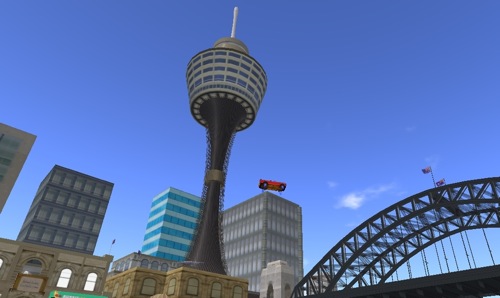

As announced on the Linden Lab blog, Second Life residents now have access to the new adult-only continent called Zindra, for the next two weeks. There’s already a bunch of Linden-created content up and running, although not surprisingly there are dozens of empty buildings this early on in the piece. I’m a sucker for pretty and Zindra is indeed pretty in places. The real fun begins as the adult-content is migrated from the current mainland. The process for doing that will likely be fraught with challenges but now’s your chance to look at where you may like to be relocated to.
To view Zindra you’ll need to download the 1.23 Second Life Viewer update and have age-verified your Second Life account.
Below are some pics I took while exploring Zindra, enjoy:

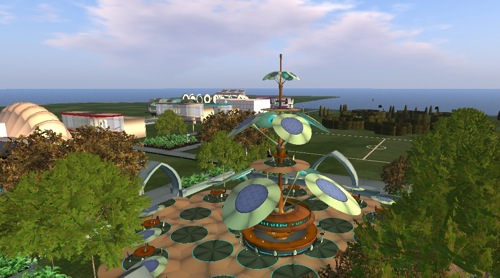
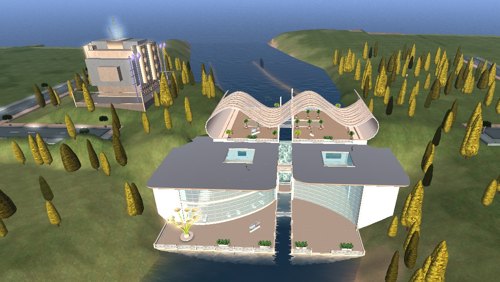
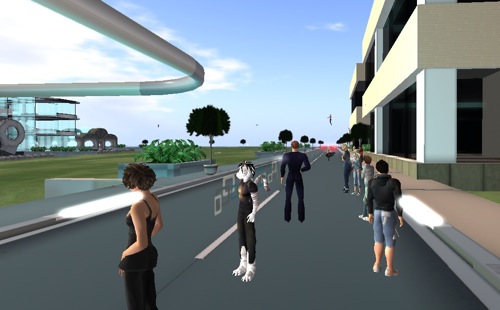

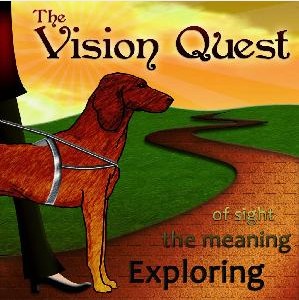 Starting on the 20th June, the Virtual Worlds Story Project is running Vision Quest:
Starting on the 20th June, the Virtual Worlds Story Project is running Vision Quest:
This Second Life version of a Vision Quest is designed to spark your imagination and encourage you to “see” in new and thought provoking ways. Participants will have a choice between one of two Story Trails to pursue:
Story Trail #1: Told through the perceptions of a person who is blind.
Story Trail #2: Told from the eyes of a seeing eye dog named Max.
Each trail will have a specific set of clues to find and follow in order to tell your story. These clues will include everything from finding actual physical objects and interacting with them to doing a bit of online sleuthing in order make your story more authentic. No matter which story you choose, you must use MAX the seeing dog (free to all participants) to find the physical clues hidden on the sims. Other requirements for the story will be explained in the instructions.
2. Lifenaut are running competition to win a pair of Prober X-130 digital video recording glasses per month. To enter you’ll need to sign up for a Lifenaut account and within a one-month period, teach your avatar 1,000 lines of conversation, upload 100 files to your Lifenaut mindfile and compose 10 journal entries.
3. Need to transfer one of your Second Life builds to OpenSim? It won’t be long before you can do so.
 VastPark have announced the launch of VastPark 3C (Community Collaboration Centre), which “connects an easy-to-use social network platform with an immersive real time meeting system, allowing users to self organise within a collaborative environment.”
VastPark have announced the launch of VastPark 3C (Community Collaboration Centre), which “connects an easy-to-use social network platform with an immersive real time meeting system, allowing users to self organise within a collaborative environment.”
It’s another noteworthy integrated virtual worlds / social media entry into the enterprise market – like its competitors however, VastPark still faces an uphill battle with businesses that already have well developed intranet platforms.
That said, Victoria’s Department of Justice and RMIT University are on board with three other undisclosed organisations, so there’s a small userbase established. Growing that base will obviously be a priority for VastPark, and to date they’ve demonstrated a real commitment to working with government and business over what’s been a very lengthy development phase for the VastPark platform.
If you’re an organisation and interested in joining the closed beta of VastPark 3C, here’s where to go.
Most people familiar with the Second Life grid are also aware of the existence of OpenSim technology, commonly thought of as the Open Source alternative to Second Life.
With OpenSim, you can create your own virtual environment grid without needing to pay for licensing. The grid can be made open to the public, or be kept private, only available to those on your side of the firewall.
What is the difference, then, between the OpenSim concept, and that of Open Cobalt and Solipsis? Essentially, OpenSim grids are designed to be served from a common point. Open Cobalt and Solipsis implementations are designed to be served from many points – they are both peer-to-peer technologies.
Open Cobalt consists of two parts: a browser and a toolkit. The browser is used to view the 3D virtual workspaces created with the toolkit. Each workspace can live on a separate personal computer. Workspaces are real time and computationally dynamic, and each can host multiple participants. Additionally, individual workspaces can be interlinked into a private and secure network of workspaces.
Open Cobalt is based on Croquet technology. Squeak is an open source software development environment for Smalltalk-80 programming purposes; the Croquet system is derived from Squeak. The Croquet system features a peer-based messaging protocol that eliminates the dependence of a virtual environment upon a single server or server cluster, and that fosters the creation of highly collaborative workspaces. The Croquet software developer’s kit (SDK) was released in 2007, after which development under the Croquet umbrella ceased. Further development of Croquet has continued under the Open Cobalt banner.
Open Cobalt has a number of very attractive features, particularly for researchers, educators and students:
Open Cobalt was started in January of 2008 by Julian Lombardi and Mark P. McCahill of Duke University. The pre-alpha release of Cobalt (downloadable here) was announced in June 2008. Since then, Open Cobalt has progressed in leaps and bounds, featuring more functionality and more extensibility. The beta release is due this year, and a full implementation is expected to be released in 2010.
Solipsis is also open source, and also features de-centralisation of computational work and data storage. Nonetheless, its background, implementation and philosophies are of course quite different from those of Open Cobalt.
Solipsis has been developed by French R&D partners Orange R&D, Artefacto, Archivideo, IRISA and the Université de Rennes II. The product, which has been available for download for some time, is currently in beta testing, though that is slated to be completed soon.
The Solipsis 3D project grew out a prior 2D project; the 2D browser also featured a peer-to-peer facility, and thus allowed users to engage in chat sessions without the use of centralised servers.
Beginning in 2006, with a time-line of 30 months to completion, the Solipsis 3D universe and the advanced modelling tools should now be available.
The Solipsis team has a rather grand notion of the position it will hold in the future: they desire it to replace and greatly extend the Web as it exists today. Far more than just creating a metaverse in which to communicate and collaborate with other people, they also see Solipsis as a potential way to store and present data in a more meaningful way than the conventional Web does now. Additionally, they hope that Solipsis will conquer scalability issues, promote usage and creation of high-bandwidth services, and that it will be self-organising – any part that is cut off from the rest of the metaverse will be self-sustaining.
The Solipsis GUI presents as both a stand-alone navigator, and as a Firefox plug-in and ActiveX component.
1. VentureBeat (USA) – Zula launches science-focused kids virtual world. “Hoping to add an Internet dimension to its growing kids business, Zula USA has launched a successful kids science education TV show in the past three years and is now diving into the vitual world market. The Burbank, Calif.-based company quietly launched its ZulaWorld virtual world for kids on June 1 and just filled me in on the details of its new offering. It has about 1,000 members so far, and it’s all in the name of making science fun.”
2. Bangkok Post (Thailand) – The world is yours … however you want it. “Have you ever created your own avatar and sent it wandering into a virtual world? With advanced tools and open source technology, Internet users can indeed create whole new characters and places online. Taking inspiration from sci-fi movies such as Star Trek, Star Wars and Sunshine, two Chulalongkorn University students have teamed up to build their own 3D virtual world called Hyperion. Kriangkrai Traichaiyaporn and Noppawat Muktaphan spent one month building Hyperion, which went on to win an award from “Wonderland Challenge 2009”.
3. Virtual Worlds News (USA) – Microsoft: Avatars, Si; Virtual Worlds, Nyet. “Last year, the New Xbox Experience introduced fully customizable avatars to Xbox Live players. With those avatars, came the attendant thought that Microsoft might be prepping an entry point into virtual worlds, with one exec going so far as to tell VirtualWorldsNews, “We’re thinking about the [virtual worlds] space heavily and have been involved in a gaming aspect for quite some time.” But that was 2008. Which is why all eyes were on Microsoft at this year’s annual E3 Expo trade show. And while recent comments from Xbox Live general manager Marc Whitten don’t exactly point to a virtual worlds launch from the company, they do fuel continued speculation.”
4. ZDNet Asia (Singapore) – Virtual worlds an inroad to new generation. “Virtual worlds aren’t dead–they’re enjoying a re-awakening, as marketers learn to connect both the real and virtual, say observers. Mary Ellen Gordon of Market Truths, a U.S.-based research firm specializing in virtual worlds, said in an interview with ZDNet Asia, companies expressing interest in virtual worlds such as Second Life are compelled to learn the media-consumption habits of the new generation. This marks a contrast against the initial wave of companies which flocked to Second Life for mostly publicity, and also “during which at least some companies did not seem to take the time to really understand virtual worlds or to think about how to use them to contribute to their overall business objectives”, said Gordon.”
5. Gamasutra (USA) – Worlds of Abundance: Currency and Virtual Worlds. “Money holds the power to shape the flow of games – from single player games to MMOs. With every game we make, we are designing currency. Sometimes the currency is simply points (or points in a more colorful guise). Other times it is a means of drawing the player towards challenges – collect x widgets and you can continue. In a third case the player collects money to gain power directly or indirectly: Direct mechanisms being things like Mario’s 100 coins for extra lives or experience points to earn level-ups, and indirect ones being shopping and bartering. One thing unifies those examples: The game has absolute control over the money supply. And in many games, it tends towards an initial scarcity that later collapses into an abundance of wealth; the player starts off weak, and has to pick opportunities carefuly, but inevitably progresses in skill or power, or finds loopholes in the system, and legitimately or not, they collect hundreds of extra lives, store thousands of pieces of equipment, boost their character’s abilities to god-like ratings.”
6. io9 (USA) – 7 Virtual Reality Technologies That Actually Work. “So far, virtual reality has mostly been a colossal disappointment. But VR has had its share of breakthroughs and innovative applications. Here are seven VR technologies that work, and that may yet point the way to truly successful virtual reality.”
7. E-Health Insider (UK) – Second Life to show Confed sessions. “embers of Second Life will be able to view sessions from the annual NHS Confederation conference live online tomorrow. For the first time, three key sessions from the conference will be accessible to members of the public through the virtual world’s website. The free screening is being provided by the NHS Confederation and Imperial College London. Second Life members will be able to view ‘Can Obama fix the US health system?’, a panel discussion on the financial challenge facing the NHS called ‘Just how tough is it going to get?’ and a final session on The paradox of choice: Why more is less.”
8. Kotaku (USA) – Seventeen Magazine Gets An MMO. “Teen bastion of style and sex tips, Seventeen Magazine, is signed up with Habbo.com to create an online interactive world for its readers. Break out the virtual lip gloss. According to Media Week, Seventeen will supply Habbo with articles, quizzes and polls for the MMO while Habbo will host a Seventeen Beauty Salon section where readers can get beauty tips from editors. This is a step up from Seventeen’s first foray into virtual worlds over its digital issue released via MTV’s virtual world, Virtual MTV.”
9. New York Times (USA) – Microsoft’s Project Natal Seeks Poetry in Motion. “Microsoft’s headline announcement at this year’s E3 gaming conference was a motion-detection system housed in a sensor bar that plugs into your Xbox 360’s ports. The pull-out-all-the stops unveiling included an on-stage appearance by Steven Spielberg who raved “I think what Microsoft is doing is not about reinventing the wheel. It’s about no wheel at all.†I had my doubts.”
10. VentureBeat (USA) – Free pricing triumphs as Free Realms online game hits 3 million in seven weeks. “Sony’s Free Realms has scored 3 million registered users in just seven weeks, making it a true hit for the free online games business model in the U.S. The “free to play†games, where players start playing for free but can purchase virtual goods with real money as they add new capabilities, has taken off in Asia, where companies such as Shanda and Nexon have pioneered this new way of doing business. But until now U.S. consumers have been reluctant to embrace it. Sony Online Entertainment’s Free Realms is the first big stake in the ground for a free-to-play massively multiplayer online game in the U.S. market. It could force a lot of rivals to follow and, god forbid, might even make a dent in the demand for the industry-leading World of Warcraft, which has 13 million paying subscribers. Just two weeks ago, Sony announced it had two million registered users for Free Realms.”
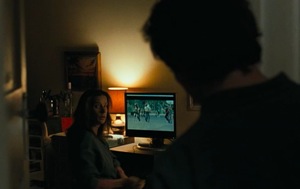 Beautiful Kate is both a visually stunning and emotionally confronting movie that builds a warmth that belies its subject matter. Based on Newton Thornburg’s 1982 novel of the same name, Director Rachel Ward has transplanted the bleakness of Idaho USA to outback Australia (the film was shot primarily at Wilpena Pound in South Australia). It made its debut at the Sydney Film Festival last night, with a wider Australian and international release on the 6th August. It’s likely to draw some serious attention for a range of reasons, not least of which are its subject content (unresolved family conflict, frustrated ambitions and incest to name three) and its actors – Ben Mendelsohn, Rachel Griffiths and Bryan Brown are three of the most well-known. Its location and intense examination of some deep emotional issues should also make it stand out.
Beautiful Kate is both a visually stunning and emotionally confronting movie that builds a warmth that belies its subject matter. Based on Newton Thornburg’s 1982 novel of the same name, Director Rachel Ward has transplanted the bleakness of Idaho USA to outback Australia (the film was shot primarily at Wilpena Pound in South Australia). It made its debut at the Sydney Film Festival last night, with a wider Australian and international release on the 6th August. It’s likely to draw some serious attention for a range of reasons, not least of which are its subject content (unresolved family conflict, frustrated ambitions and incest to name three) and its actors – Ben Mendelsohn, Rachel Griffiths and Bryan Brown are three of the most well-known. Its location and intense examination of some deep emotional issues should also make it stand out.
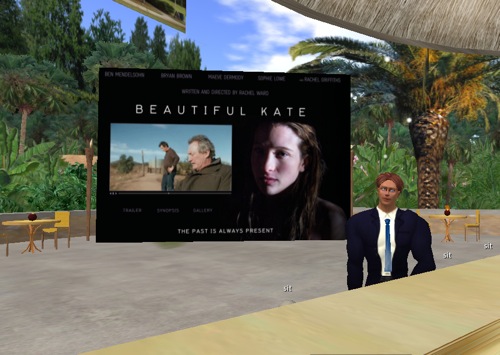
The reason for this being discussed on The Metaverse Journal is the involvement of Second Life and some Australian (and American) Second Life residents in the movie. That involvement is extremely modest and in no way pivotal to the progression of the film’s plot, and that is exactly why I believe it’s noteworthy. Second Life is shown in a remote but otherwise remarkably everyday setting, being used for what it does best: connecting people in a more immersive way. Even better, it shows how virtual worlds are accessible in remote areas: I can vouch for the fact that frame rate times and latency issues were calculated to get as close an estimate to what an actual Second life session would look like from a remote location.
I won’t give away any more than that in regards to plot, but for the more dedicated virtual worlds follower, Beautiful Kate is one of the first (possibly the very first?) international release movie featuring a 3D non-gaming world in a context where that world isn’t the focus. There’s some analogies that can be drawn with TV: the first time one appeared in a movie would have been an eye-opener for some, but now there’s more likely to be comment about a movie scene featuring a home living area without a TV.
This is the future lot of virtual worlds in regards popular culture, and it will be a welcome evolution. Once virtual worlds’ place is cemented in everyday life, then perhaps there can be sensible discussions around their opportunities and challenges without the white noise of sensationalism or unfamiliarity.
Some significant kudos need to be given to Beautiful Kate’s production team. Director Rachel Ward is the first to admit she’s no Second Life user. That said, when writing the screenplay Rachel had an intrinsic understanding that Second Life was increasingly a normal way for people to interact remotely in a more immersive way. She also understood that most people use Second Life for one thing: to have fun. It was 100% Rachel’s vision on what the ‘Jungle Bar’ and the lead avatars should look like that were featured. Producers Leah Churchill-Brown, Bryan Brown and their team were very patient and supportive throughout the whole process of clearing intellectual property rights with Linden Lab. As I’ve said already – the Second Life footage is a tiny component of a movie with much broader themes, but it remains demonstrative of the growing power of virtual worlds in popular culture, and not just driven by the ‘digital natives‘.
Should you go and see Beautiful Kate? My obvious and biased answer is yes. Be prepared to be confronted and don’t expect to come out laughing (although there are some very humourous sections), but this is a more than worthy film, with or without the couple of minutes Second Life 😉 You can view the trailer for the movie right here:
Technical Aspects
The Second Life footage was shot in June 2008 on a set specifically designed to the Director’s requirements. Encore Design Group (EDG) created the ‘Jungle Bar’ in Second Life and did a stupendous job if it . They had created a Second Life presence featured in the US version of The Office and they delivered in spades for this project too. The scene itself was shot over three weekends and involved the following Second Life Residents in addition to myself:
Graham Sabre
Wolfie Rankin
Simon Kline
NeilRobert Janus
Kat Claxton (EDG Designs)
AnnGee Li (EDG designs)
Leyah Renegade
Zak Claxton
Jambalaya Fonck
Willowhouse
The footage itself was captured via iShowU on an iMac at a frame-rate to replicate Second Life responsiveness on a less than optimal broadband connection. The only editing done was to package the footage in a range of acceptable formats for the production team to edit. This by necessity was a low-cost project but the end result in my biased opinion, is pleasing and a good fit for the movie.
I’d really like to thank all those people listed above for their help with the creation of the scene. Kat and AnnGee from EDG were stupendous. I also have to make special mention of Simon Kline who initially let me know about this opportunity and it was great to have him involved in the scene. Graham Sabre was also invaluable as the male lead avatar and was very patient with the large number of takes, as were all the other dancers. We’ll have more on Beautiful Kate, including some shots of the Second Life scene, in the weeks leading up to its more widespread distribution.
Disclosure: Creative Shed Services (of which I am the owner) was involved in Project Managing the Second Life shoot and was paid to do so. EDG Designs are an advertiser on TMJ.
Other coverage of Beautiful Kate and Second Life:
2. Massively
 It’s safe to say that Tateru Nino has quite a scoop over at Massively. She’s had the chance, like I have, to check out a rough version of the next-generation Second Life browser. As you’ll see below, on a superficial level, there’s not a lot that’s different.
It’s safe to say that Tateru Nino has quite a scoop over at Massively. She’s had the chance, like I have, to check out a rough version of the next-generation Second Life browser. As you’ll see below, on a superficial level, there’s not a lot that’s different.
In the short time I’ve had a play, the real changes appear to be in the menu structure, menu titles, three little widgets on the right-hand side (which slide out commonly used windows like Places). I have to say that overall, the changes are very safe. Sure, this is probably a pre-release version well before one ready for release, but given the anticipation around the next-generation browser, it’s hard to imagine that there won’t be a real sense of anti-climax if Viewer 2.0 looks essentially the same as 1.23. Who knows, this one may be a decoy version to ensure we’re all surprised as hell when the ground-breaking one is released.
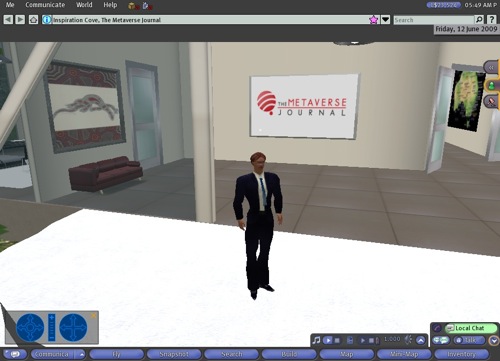
(Full-size version can be viewed here)
My initial pet peeve? When right-clicking on an avatar, the pie-shaped menu is gone and replaced with the same menu text as the rest of the interface. It doesn’t seem like much of an enhancement to me although I suppose it will help newer users with a more uniform menu context.
To be fair, Linden Lab do have a hell of a job balancing the need for a more intuitive interface versus the risks of radical change frustrating current Second Life residents. For me, version 2.0 seems to be too far down the conservative change end of the spectrum,
More on the browser in coming days, but in the meantime, what do you think?
Update: Linden Lab have made some comments on the issue, stating this browser version is an early version of what will be the final product.
Copyright © 2024 · Magazine Child Theme on Genesis Framework · WordPress · Log in
Recent Comments